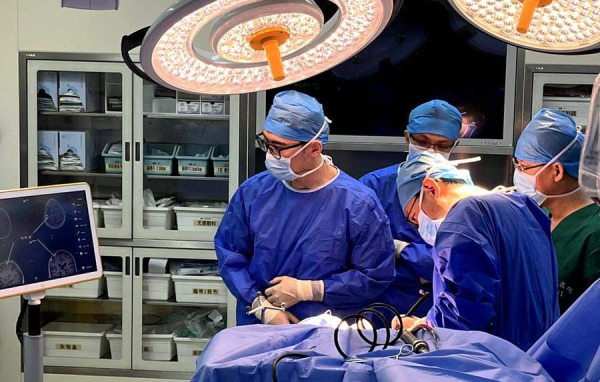ຂປລ
Repairing the human brain continues to be an immensely challenging endeavor. One approach involves connecting the brain to a machine, while other scientists are pioneering in the field of simulated brain cultivation.

(Xinhua/KPL) Repairing the human brain continues to be an immensely challenging endeavor. One approach involves connecting the brain to a machine, while other scientists are pioneering in the field of simulated brain cultivation.
A Chinese team has proposed a novel strategy of integrating these two approaches. Their strategy involves implanting brain-like nervous tissue in a cerebral injury region and then electrically connecting it to an external control.
Although transplanted organs can survive and integrate with the host brain, a lack of precise growth targeting hinders effective neural repair. The Chinese research team responded to this challenge by employing electrical stimulation to boost neuron plasticity.
This two-in-one strategy turns out to leverage the benefits of both tissue transplantation and electrical stimulation in enhancing neural regeneration and functional recovery.
The scientists from Tianjin University first cultivated brain-like organoids for a period of 90 days and then secured them onto a 3D-printed scaffold, where the tissue was wired to dual-grip flexible electrodes.
One month later, observations of the in-vitro platform revealed an increase in neural activity -- with the growth of both neuronal cells and star-shaped cells that support the brain, according to the study published this week in the journal Nature Communications.
In an in-vivo experiment, the researchers created a lesion cavity to simulate a real brain injury, where they then implanted the 40-day-old tissue. The flexible electrodes were inserted 25 days later to construct the organoid-brain-computer-interfaces (OBCIs).
Assessments at 60 and 120 days were encouraging, showing normal vascular structures, active neuronal synapse expression and no abnormal aggregation of immune cells around the electrodes.
These outcomes indicated that the implantation did not cause damage to the host brain and that the organoids had shown good growth within the body, according to the study.
The team also recognized current challenges, such as risks of bleeding and infection associated with electrode implantation. They are committed to enhancing the safety and stability of the technology in future developments.
KPL